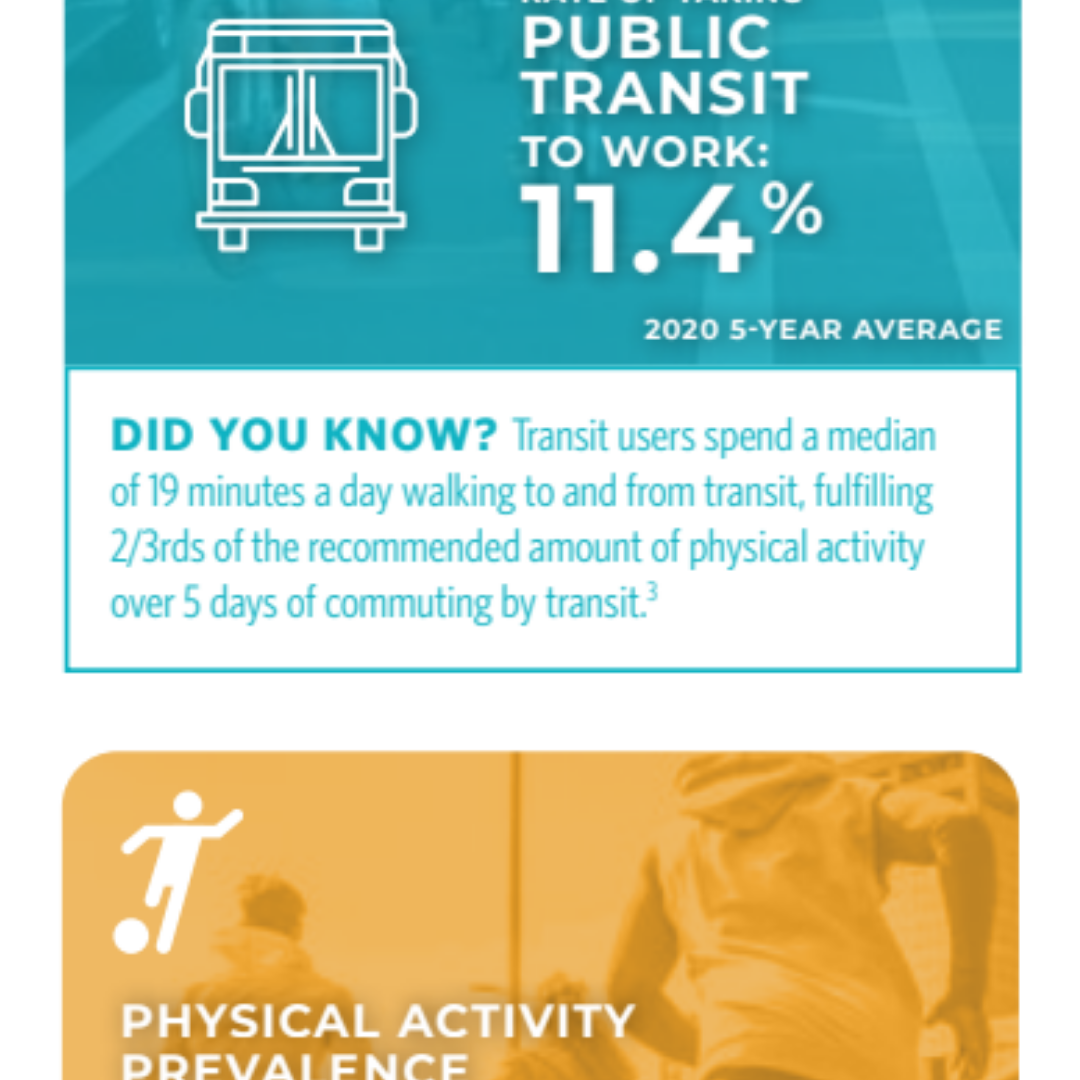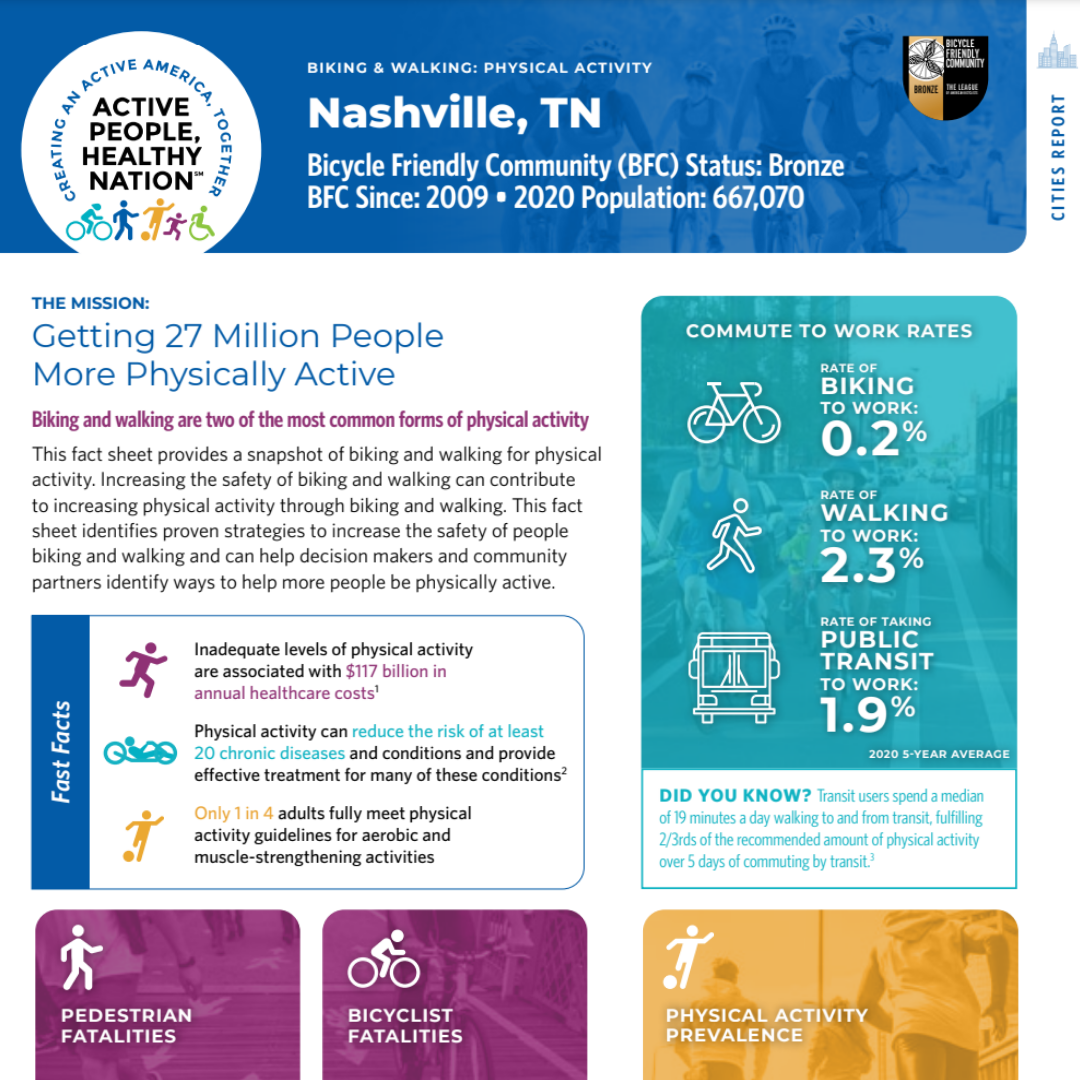DISCOVER YOUR LOCAL BICYCLING COMMUNITY
Find local advocacy groups, bike shops, instructors, clubs, classes and more!
Some of Our Favorite Things About the New State and City Fact Sheets
Last month we published fact sheets for every state and the 76 cities included in the League’s Benchmarking Project for large cities. Those 76 cities include the 50 largest cities in the country, the largest city in each state if not already included, and all five Platinum-level Bicycle Friendly Communities, if not already included. Each fact sheet provides public data on biking and walking, with more detailed information available through data.bikeleague.org.
The Benchmarking Project involves a lot of data – if there is a public data source that says something about biking and walking, we report it – so this month, I want to reflect on some of the choices we made about what to prioritize reporting on in these fact sheets. I hope that these highlights help you better understand how you can utilize the data provided in the State and City Fact Sheets to advance biking and walking advocacy in your community, and we hope it spurs further exploration of our comprehensive collection of data at data.bikeleague.org.
1. The “Did You Know” facts
 The Benchmarking Project can be sprawling, with six hefty print(!) editions since 2007. The short “Did You Know” facts on the city and state fact sheets quickly provide contextual data highlighting why the data we track matters and how it can connect to a person’s commute, activity, or advocacy for a better built environment.
The Benchmarking Project can be sprawling, with six hefty print(!) editions since 2007. The short “Did You Know” facts on the city and state fact sheets quickly provide contextual data highlighting why the data we track matters and how it can connect to a person’s commute, activity, or advocacy for a better built environment.
2. “What Works”
This section is based on evidence-based recommendations from the CDC showing that physical activity increases when the built environment provides safe activity-friendly routes to everyday destinations. By spotlighting this insight and referencing key built environment improvements recommended by FHWA, the “What Works” section is a clear and concise guide to improving your community.
3. The Traffic Law graphics
The traffic law graphics show two important laws: 1) how much space a driver must give a bicyclist while passing, and 2) whether a driver must yield or stop for a person in a crosswalk. These would make great clipped screenshots to share on social media…
4. A focus on traffic safety
In 2022 the USDOT adopted its first-ever National Roadway Safety Strategy with a goal of reaching zero traffic deaths by adopting a Safe System Approach to roadway safety. This is a welcome new strategy, and whether cities and states are making the shift is a key benchmark to track. By aggregating data on Road to Zero Coalition membership, participation in the Vision Zero Network, commitment to the Towards Zero Death National Strategy adopted by AASHTO, and other safety indicators, the State and City Fact Sheets help track whether the shift to a Safe System Approach is happening.
5. Big, clear, data
 The Benchmarking Project goes deep into publicly available data on biking and walking. It was hard to pick data to go on each State and City Fact Sheet, but the data on commuting, fatality rates, and physical activity do a great job of providing a clear overview on what we know about biking and walking in the United States. Hopefully, this quick and easy-to-reference data gets people interested in diving deeper and exploring the full range of data at data.bikeleague.org.
The Benchmarking Project goes deep into publicly available data on biking and walking. It was hard to pick data to go on each State and City Fact Sheet, but the data on commuting, fatality rates, and physical activity do a great job of providing a clear overview on what we know about biking and walking in the United States. Hopefully, this quick and easy-to-reference data gets people interested in diving deeper and exploring the full range of data at data.bikeleague.org.
6. On the city sheets, the “BFC since” data
More than 90% of the large cities included in the Benchmarking Project participate in the League’s Bicycle Friendly Community (BFC) program, which has been around since 1995. It is cool to see how long some communities have been engaged with the BFC program (although our data only goes back to 2002) and compare the data of those cities that have been in the BFC program long-term v.s. recent BFCs v.s non-BFCs.